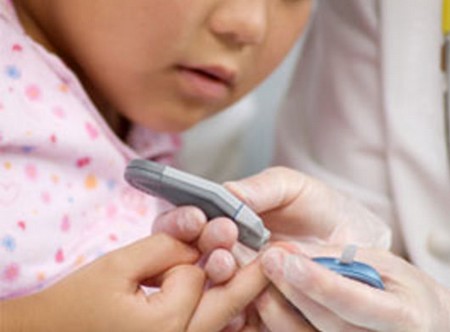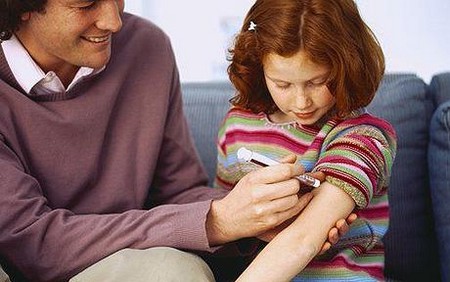Best Way to Deal with Diabetes Mellitus in Children
Diabetes mellitus, often called “sugar diabetes,” is a disease most people know something about. “Diabetes” means “a siphoning off’ or “a running through”; it describes a condition in which the body excretes a great deal of urine. “Mellitus” means “sweet” (containing sugar). There are two types of diabetes mellitus. Physicians refer to type L or insulin-dependent diabetes, which usually begins in youth but sometimes begins in adulthood; and type II, or insulin-independent diabetes, which generally begins after age 40, but sometimes begins in youth.
In type I, something unknown—perhaps a virus or injury—causes the destruction of special cells in the pancreas that normally produce a substance called insulin. Since insulin is responsible for regulating the amount of sugar in the blood, a lack of insulin permits blood sugar to build up to dangerous levels. The abnormal amount of sugar that builds up in the blood draws fluid (in a process of osmosis) from the tissues of the body into the bloodstream. In turn, the kidneys begin filtering out the sugar, and excreting it, along with the abnormally large quantities of fluid (urine) that have been drawn into the blood.
What are the symptoms? Children with type I diabetes have to run to the bathroom frequently; at the same time, they are often thirsty, and they drink a great deal. They complain of being tired, and they seem weak. Many lose weight. Some experience blurring of vision. Because resistance to infection is reduced, these children suffer more infections than other children. Girls, for example, may develop vaginal fungus infections. In addition, because of the large output of urine—and perhaps because a toxic effect of the disease on sleep makes awakening difficult—the child may begin wetting the bed even if she had been dry for years. In young children (aged approximately 7 to 10 years), the onset of bedwetting may be one of the early signs of diabetes.
It is very important that you bring to the doctor’s attention any symptoms of diabetes in your child.
If your child has diabetes, the physician will place him on a special diet and prescribe carefully monitored doses of insulin. Your child will resume a relatively normal life. The bedwetting, too, will subside (unless there are additional, unrelated physical problems). The doctor most qualified to treat your child’s diabetes is a pediatric endocrinologist. However, a pediatrician or even a family doctor also can treat this disease.
Type II diabetes mellitus is the type that seldom occurs in childhood. In type II, the pancreas produces insulin, but the body does not utilize it properly. The patient stores fat and gains weight. Otherwise, her symptoms are similar to those in type I. Type II cannot be treated with insulin because the body will not utilize it. Treatment, which must be under the care of a doctor, consists of rigorous exercise, a special diet, and loss of all excess weight.
Categories
Advertisements
Recent Articles
 How to Understand Bed Sizes – A Small Guide
How to Understand Bed Sizes – A Small Guide How to Select Some Must Have Kitchen Accessories
How to Select Some Must Have Kitchen Accessories Best Way to Change a Car Tire
Best Way to Change a Car Tire Best Way to Write an Affirmation
Best Way to Write an Affirmation Best Way to Take Charge of Your Financial Life
Best Way to Take Charge of Your Financial Life Best Way to Survive a Party When You Don’t Know Anyone
Best Way to Survive a Party When You Don’t Know Anyone Best Way to Stop Self Sabotaging Yourself
Best Way to Stop Self Sabotaging Yourself Best Way to Start Journal Writing
Best Way to Start Journal Writing Best Way to Speak with a Powerful Voice
Best Way to Speak with a Powerful Voice Best Way to Simplify Your Life
Best Way to Simplify Your Life Best Way to Respond to a Put-Down
Best Way to Respond to a Put-Down Best Way to Reduce Acne Breakouts
Best Way to Reduce Acne Breakouts Best Way to Recover from Dining Disasters
Best Way to Recover from Dining Disasters Best Way to Quit Your Job Gracefully
Best Way to Quit Your Job Gracefully Best Way to Make Your Own Website
Best Way to Make Your Own Website



Leave a Reply